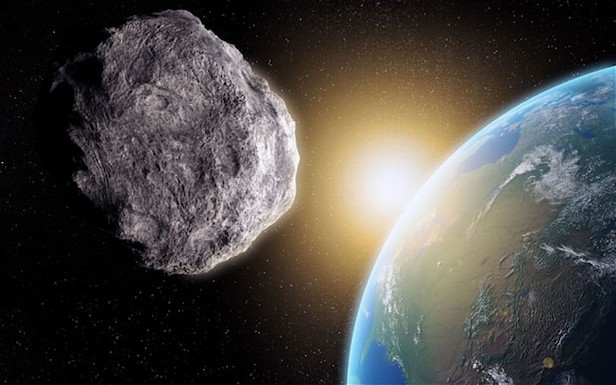Asteroids With Moons Of Their Own Asteroids With Moons

By
A run-in with a huge asteroid is bad enough, as movies like Deep Impact have gouged into our consciousness. Now comes an even more terrifying scenario: double impacts. New sightings of asteroids with companions--the latest one just posted on the Web--are convincing astronomers that such pairs are far from rare.

Indirect evidence, such as paired impact craters on Earth, had already hinted that asteroids sometimes come in pairs. In the late 1970s, some astronomers watching stars blink out as asteroids passed in front of them reported extra flickerings, possibly caused by companions. The first direct proof that asteroids can have moons of their own came when the Galileo spacecraft flew by 56-kilometer-wide Ida in 1993 and photographed tiny Dactyl, a 1.5-kilometer body orbiting about 100 kilometers away.
In an to be held at Cornell University in July, astronomer William Merline of Southwest Research Institute in Boulder, Colorado, and his colleagues report having spotted a much heftier companion around 214-kilometer asteroid Eugenia: a 15-kilometer satellite, orbiting Eugenia at about 1200 kilometers. The two form a single fuzzy spot of light in an ordinary telescope, but late last year, in the course of a 200-asteroid search for satellites, Merline's group was able to separate them with the 3.6-meter Canada-France-Hawaii Telescope on Mauna Kea, Hawaii.
More candidates for binary asteroids are emerging from observations of the pulsating brightness of asteroids that pass near Earth. Most asteroids reflect varying amounts of sunlight as they rotate because of their irregular shapes, but a half dozen so-called near-Earth asteroids (NEAs) observed by Petr Pravec of Ondrejov Observatory near Prague and his colleagues and by Stefano Mottola of the DLR in Berlin flicker as if one body is periodically passing in front of or behind another perhaps twice its size.
Theoreticians, meanwhile, are trying to explain how asteroid satellites form. Smaller collisions between asteroids have turned many of them into rubble piles rather than solid rocks, and William Bottke of Cornell University and Jay Melosh of the University of Arizona, Tucson, suggested in 1996 that Earth's gravity could split such fragmented asteroids in two if they passed nearby. Eugenia has a low density and is probably one of these rubble piles; yet it is in the main asteroid belt between Mars and Jupiter and never would have passed close by a planet, says Melosh. "That will certainly give us theoreticians something to chew on," he says.

0 Comments
Posting Komentar